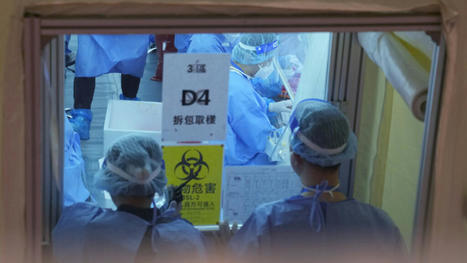It is hard to imagine that a species that could figure out how to write, print and alter DNA cannot figure out a reasonable approach to regulating it. T he wholly synthetic mRNA vaccines for Covid-19 saved nearly 20 million lives in just their first year of use, according to data published in 2022 by The Lancet. That success stands as the most prominent example of the power of synthetic biology, a field whose possibilities have excited me since I first heard the term more than 15 years ago. As scientists gain increasing dexterity in manipulating the basic elements of life, they are designing not only other synthetic vaccines, but also therapies for cancer, benign alternatives to fossil fuels, and even novel approaches to protecting endangered species. Some of these efforts will succeed, and some surely will fail. But it is hardly hype to call what is happening in labs around the world a revolution in biology. Technological advances do not come without a price, though. And as a rule, the greater the advance, the greater the risk that accompanies it. In a world where biology moves at the speed of light, those risks can get out of hand. The impact — whether accidental or deliberate — could be far more ruinous than any threat we have yet imagined. Imagine the effects if a virus more deadly than even SARS-CoV-2 were to spread throughout the world. “If you simulate the airburst detonation of the largest currently operational intercontinental ballistic missile, over a large city — New York, Beijing, Moscow, London — the estimated casualty count is about 3 million. SARS-CoV-2 has killed many more people than that,’’ Kevin Esvelt told me not long ago. Esvelt runs the Sculpting Evolution group at the MIT Media Lab (and for full disclosure, I teach a course there with him called Safeguarding the Future). We have all heard that somewhere in some corner of the internet, you could learn how to make a bomb, even a nuclear weapon, if you had the vast resources required to do so. But there are many laws and treaties designed to prevent people from succeeding. It’s hazardous information.
There are almost no such rules when it comes to publishing the fundamental blueprints needed to make or alter a virus with the tools of synthetic biology. There are already thousands of people who could use readily available reverse genetics protocols, a genome sequence, and synthetic DNA to produce an infectious virus. As the price of computer power and synthetic DNA falls, the number of people capable of working with those blueprints can only grow. By blueprints, I mean the genetic code — the DNA sequence that makes smallpox or polio or SARS-CoV-2. Those sequences are freely available on the internet. The sequences for the devastating influenza viruses that struck in 1889, 1918, 1957, and 1968 are also easy to find. But even more deadly viruses — Marburg, Lassa, and Ebola — are all out there, too. In 1998, an international team of scientists retrieved the 1918 influenza virus, which killed as many as 50 million people, from six frozen corpses in the Arctic. The samples from those infected bodies were considered so dangerous that only a single scientist was permitted to work with them, and only in a highly secure laboratory at the Centers for Disease Control and Prevention. But what about the sequence of the genome found in those corpses? Science magazine published it in the issue dated Oct. 7, 2005. Granted, that was before biology had made the transition to the digital world. And scientists still make serious attempts to control access to dangerous viruses in laboratories. When it comes to the information needed to make them, however, we exercise almost no such caution. Publishing the sequences of biological discoveries is not just encouraged. In the academic and industrial systems we have today, it is expected. Openness has always been a signature element of scientific discovery. Ideas are supposed to spread. And in a democracy, we embrace the free speech model of science. Researchers publish tens of thousands of genetic sequences every year. The vast majority pose no harm. The wide dissemination of the SARS-CoV-2 virus sequence helped scientists create the revolutionary mRNA vaccines in record time, offering just one example of the benefits of open scientific exchange.....



 Your new post is loading...
Your new post is loading...








